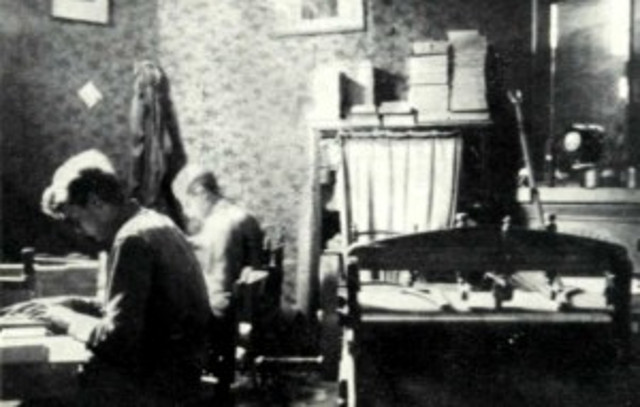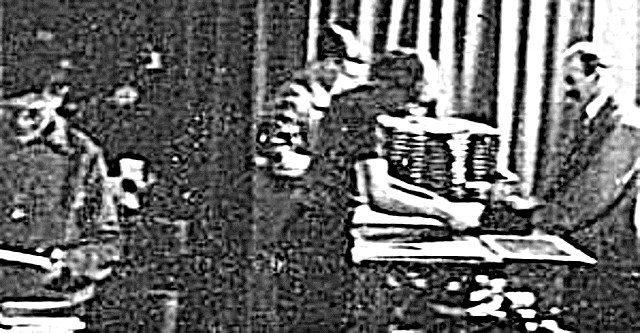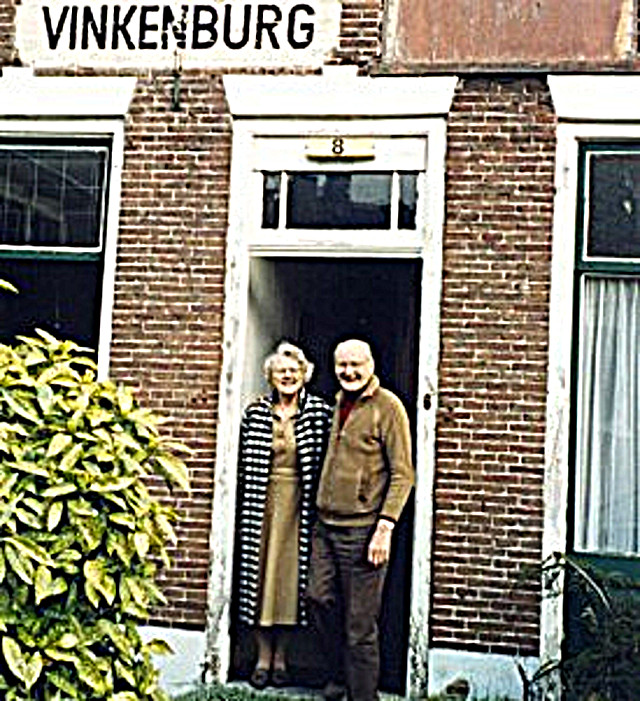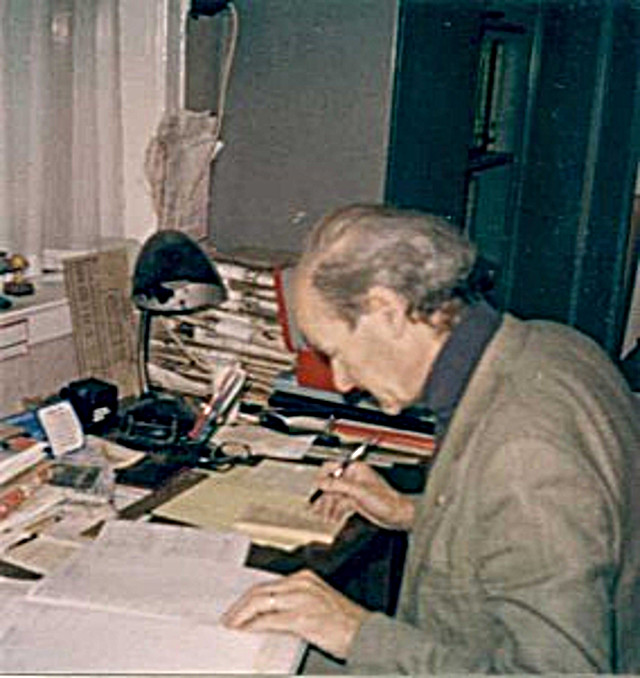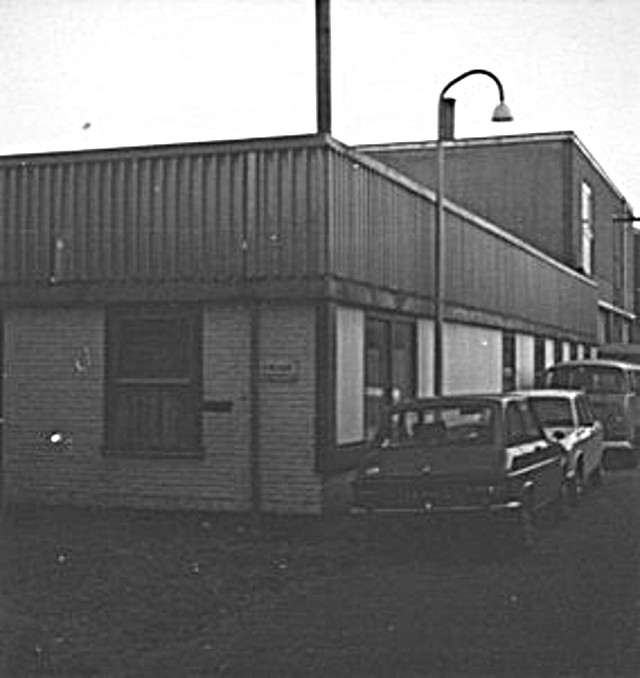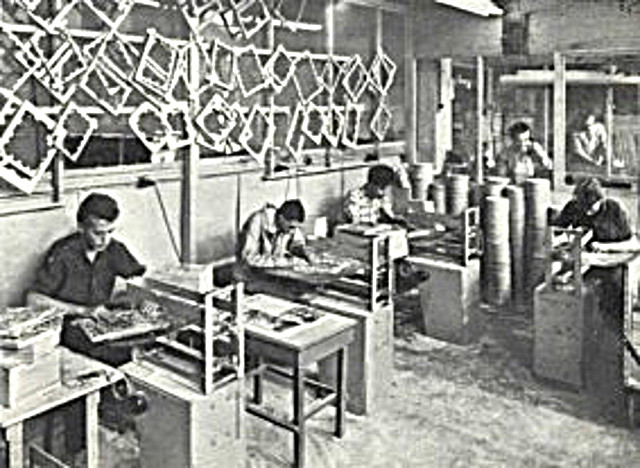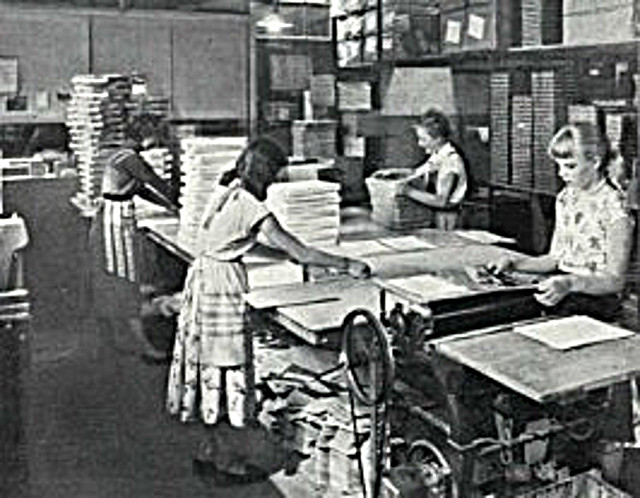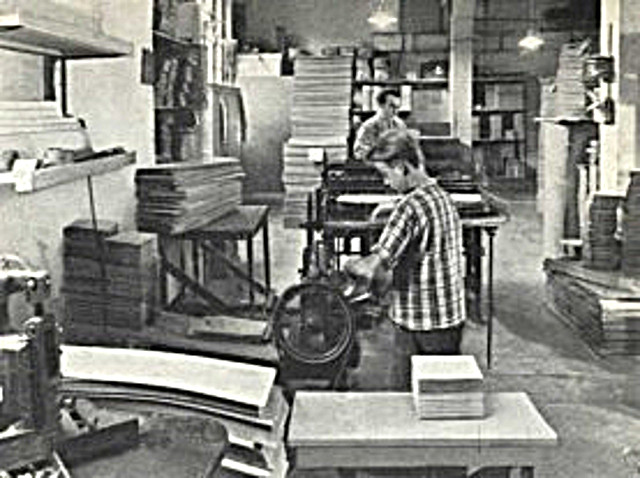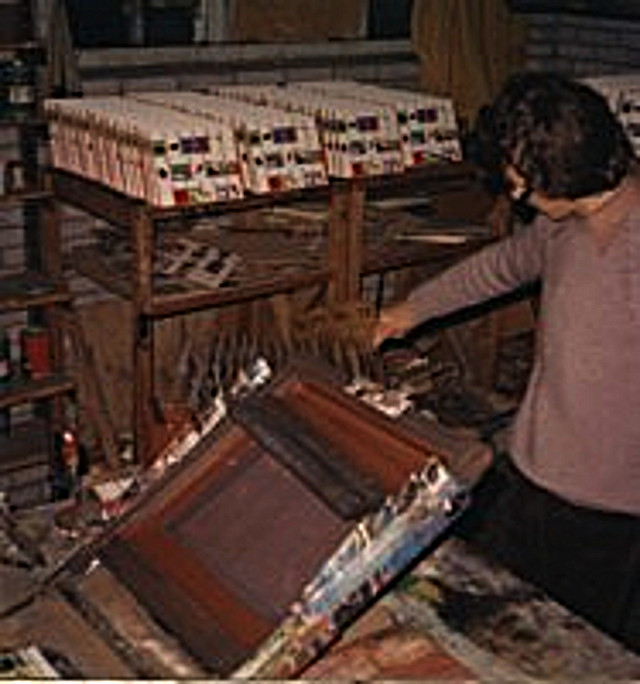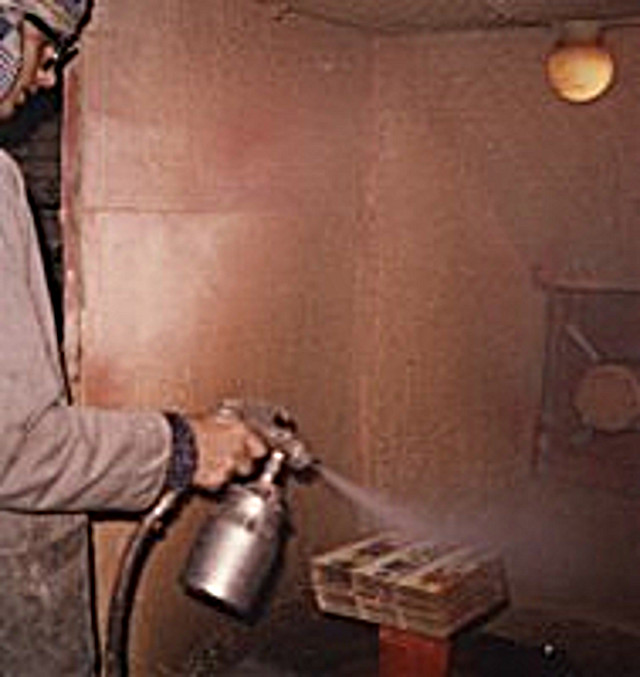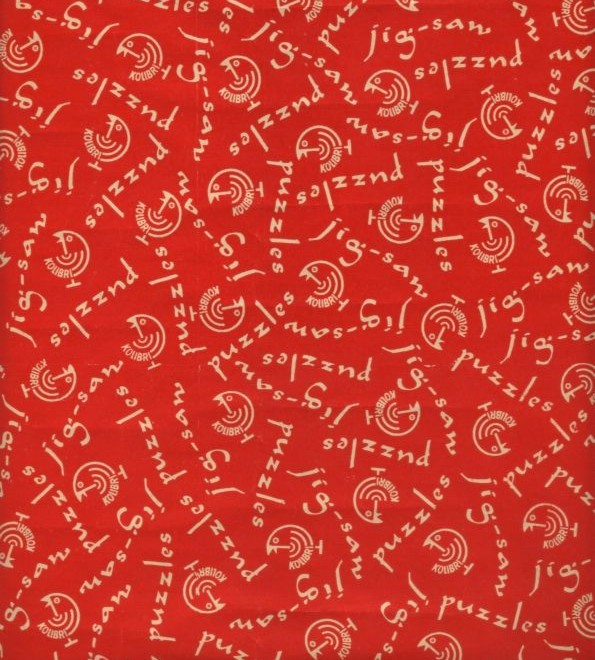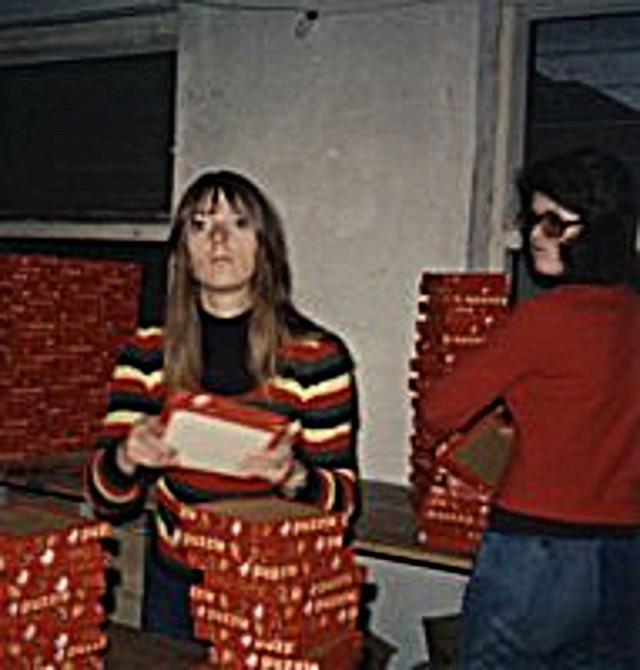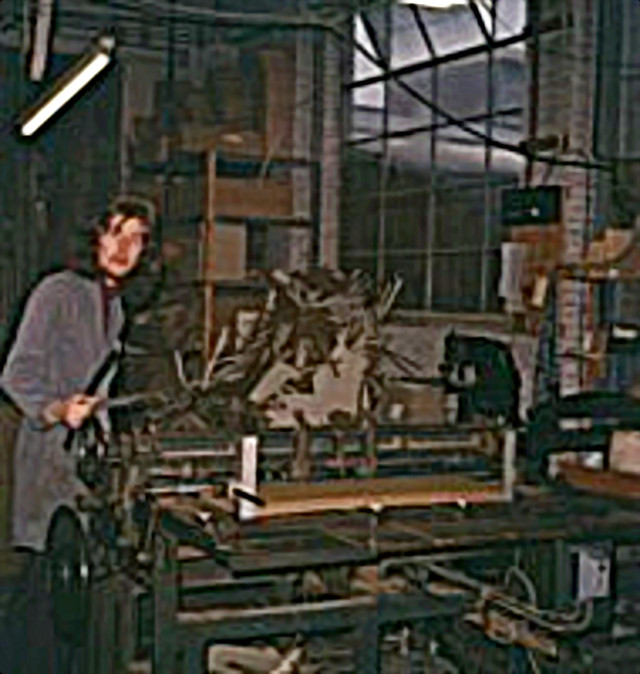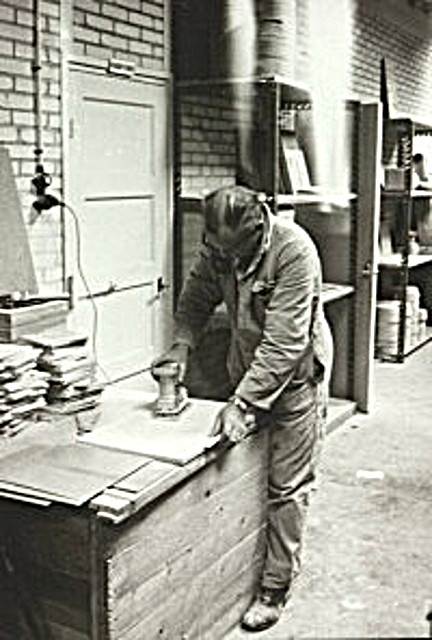|
Sawing systems
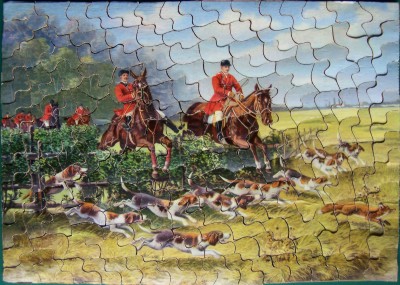 In the beginning sawing was done with a 'reductional' system. This implied
that the pieces were sawn of from the plank piece by piece, from the outside
to the middle. This can clearly be seen in the result. Take a look at the
'Bijenkorf' puzzle (right or bigger in Assortment), the first piece was at
the right bottom. From there the edge of the puzzle was followed to the top,
then along the top to the left, along the side to the bottom and then back
to the right. After that the new outer edges were followed till there was
nothing left to saw. Every sawn piece was put in the box immediately.
These oldest puzzles were made without interlocking pieces, there were no
tongues. At laying the puzzle the pieces just had to be put against each other.
In the beginning sawing was done with a 'reductional' system. This implied
that the pieces were sawn of from the plank piece by piece, from the outside
to the middle. This can clearly be seen in the result. Take a look at the
'Bijenkorf' puzzle (right or bigger in Assortment), the first piece was at
the right bottom. From there the edge of the puzzle was followed to the top,
then along the top to the left, along the side to the bottom and then back
to the right. After that the new outer edges were followed till there was
nothing left to saw. Every sawn piece was put in the box immediately.
These oldest puzzles were made without interlocking pieces, there were no
tongues. At laying the puzzle the pieces just had to be put against each other.
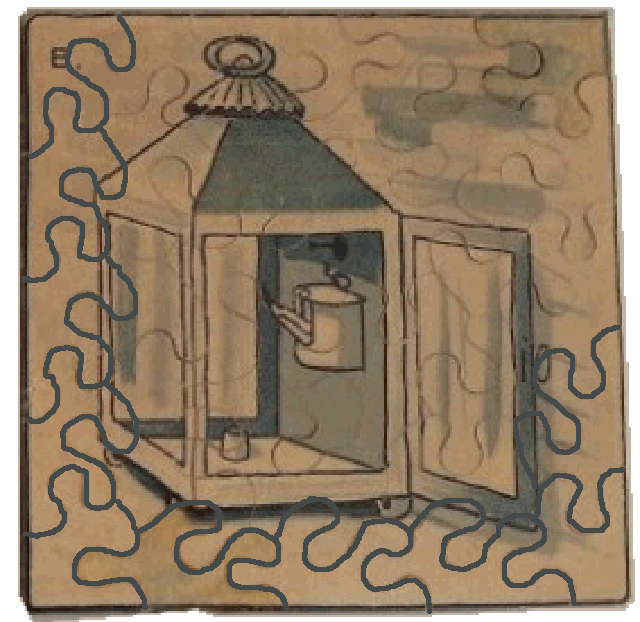 Not much later the pieces were sawn with tongues gripping the adjacent pieces.
The K-puzzle 'lantern', see the picture to the left, is an good example.
With this puzzle they started at the top left. That can clearly be seen
as this is the only piece that has, apart from the outer sides, a flowing
line. With all others the cut starts more or less at an right angle from
the previous cut. With this puzzle one continued along the side to the bottom,
then to the right and so on, till only the piece in the middle was left.
Not much later the pieces were sawn with tongues gripping the adjacent pieces.
The K-puzzle 'lantern', see the picture to the left, is an good example.
With this puzzle they started at the top left. That can clearly be seen
as this is the only piece that has, apart from the outer sides, a flowing
line. With all others the cut starts more or less at an right angle from
the previous cut. With this puzzle one continued along the side to the bottom,
then to the right and so on, till only the piece in the middle was left.
The K-sawing system
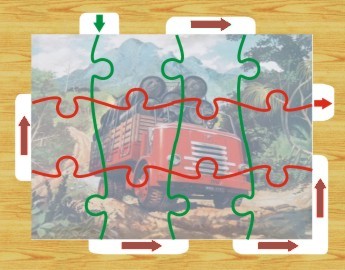
The puzzles went with five into a multiplex frame with a
thickness of those five puzzles and niches for the sawblades.
The shown example is for 3x4=12 pieces.
|
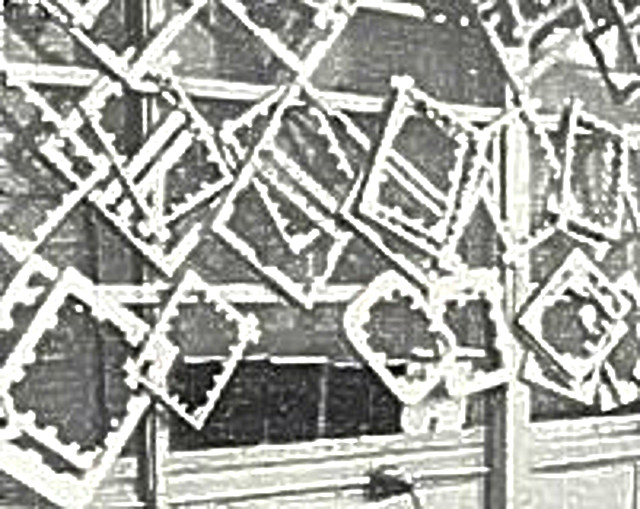 Still later a unique sawing-style was developed. It made cohesion so good
that it became possible to pick up a puzzle by two of the diagonally opposed edges and lift and put the puzzle in a box in one move. This method had two other advantages.
Still later a unique sawing-style was developed. It made cohesion so good
that it became possible to pick up a puzzle by two of the diagonally opposed edges and lift and put the puzzle in a box in one move. This method had two other advantages.
The first is that the puzzle remains 'laid' during sawing so the sawn pieces
do not have to be put in the box. A clear advantage for the speed of sawing.
The second is that it became possible, because the puzzle remains 'laid',
to put more puzzles on top of each other during sawing. With the hard birch
triplex three puzzles together was chosen. Later softer poplar triplex became
available making five puzzles together possible.
To prevent puzzles to shift during sawing a frame was made with the thickness
of the number of puzzles to be sawn together. The frame showed holes where
the sawyers could steer to. There were two small holes, de beginning and the
ending of sawing. There was one big niche going around the corner to make the
change from vertical to horizontal possible. The others always connected two cuts.
On a short and a long side of the frame a sketch was made to show what the
cut should look like (not in this picture, would be a green cut on the left
of the frame and a red one at the top). Almost all puzzles had at least one
side with an odd number of pieces (the exception being de series 40 with four by
four pieces). The cut along the odd side only had tongues on the od rows, the
even rows just had a slightly curved line to the next row. The next tongue would
then be made to the other side. This scheme can reasonably well be seen in the
puzzle of the Golden Arrow train (fifth row below the Tangram game on the Assortment page).
Sawing in the K-system had to be practiced. This was called "firewood sawing":
using old wood of insufficient quality. Form, place and shape of the tongues
is manually done by the sawyer using the markings made on the edge of the
frame mentioned above.
For bigger puzzles in book-boxes that had to be sold in a so called book
box (see page Assortment, just above the 'Bijenkorf' puzzle) in the time
of reductional sawing the pieces went by a slide to a box with a gauze
bottom through which the sawdust fell. Then after sawing the pieces went
into the box. After introduction of the K-system the puzzles were sawn
into two halves or four quarters that were sawn like the smaller puzzles.
Many of the sawyers worked in their own homes (usually in a shed), with
a company provided sawing machine delivered by our father, who also took
care of picking up the puzzles from their homes and deliver new ones to be sawn.
The finishing of the puzzles
The luxury puzzles were sanded on the backside. To further avoid wood splinters
extra care was given to the selection of saw-blades. The right type was found
in Germany. It was wide and slim, made out of high-quality iron. This shape
improved the streamlined form of the tongues of the pieces. The delay of the cut
in following the movement of the puzzle made for a more fluent shape, less angular.
In that respect the first electrical machines were not a great success. Strange
as it may sound, they were too stable. The old foot powered machines had a better
flexibility. Later machines were better. The art of sawing was learned from an
English hobby-magazine.
The wood they used was triplex, three layers glued together at square angles.
The unavoidable nodes were (during production of the triplex) repaired by punching
a round hole in the defective layer and filling that with a chip of the same size
glued to the middle layer.
This was only done for the outer layers as for most purposes the nodes did not
pose a problem. They did however for puzzles! And it was impossible to check
this before sawing. Usually it was discovered during sawing and in most cases
the pieces could be repaired. A time consuming operation.
|
|
Logo's
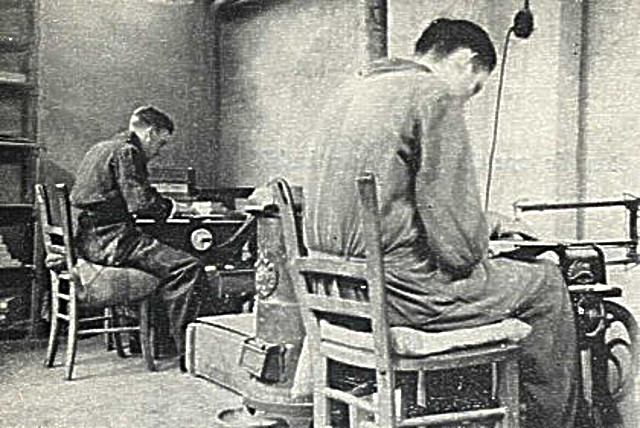 The workshop at the Klaus home in 1940
The workshop at the Klaus home in 1940
|
The triangular K-puzzle company-logo was designed by our father.
This logo was used until the 1960's. Then, gradualy, the
Kolibri emblem appeared and took the place of the K-puzzle brand.
The Kolibri-logo was also designed by him.
Klaus in wartime
In the first years of the war the company managed to make a reasonable production.
The excellent Finnish wood was no longer available, but a lesser quality was
acceptable. In the end, however, puzzles were made out of thick cartboard and
cheap wooden crates. Finally, they fell back on hardboard, at that time a novelty
product (invented around 1935) and used mostly for blocking out light in windows
in the black-out period. The advantage was that it didn't warp, sawblades however
broke more frequently because of the glue used creating the board. These puzzles
were advertised as 'ideal puzzle' because they didn't warp.
Pictures were also hard to come by. At a certain point they even had to use
wallpaper for children's rooms. Wallpaper was also used on the boxes for the puzzles.
In the winter of 1944-45 production became almost non-existent. Permissions for
production of toys were no longer given by the German occupant.
After the death of my grandfather (January 5th, 1944), also due to the effects
of the hunger winter, less and less production was possible. Frans and Jan
took every job they could. Jan, especially, was busy with his "hunger trips",
trying to lay his hands on every bit of food he could find. Frans was busy
with painting tiles, making luxury cassettes for silverware, making sigarette
paper from carbon copy paper et cetera. At the end of this winter, Frans was
picked up by the Germans (at the hairdresser's) and sent to Germany
for the "Arbeidseinsatz", as were most of his employees.
In the war, Jan joined the B.S. (Binnenlandse Strijdkrachten, i.e. the resistance),
which meant that, after the liberation, he was automatically in active military
service. After the two years of his service, his place had been taken by
Bep Voskuilen (brother in law). A further relocation was necessary because of
the fact that Frans' family grew. A major part homestead was already taken by the
factory. To go for dinner, you had to pass from the kitchen either through the
cartonage or the sawing room. No fun for a young and rapidly growing family.
The final location was found in the same street, on Beerensteinerlaan 43a.
|
